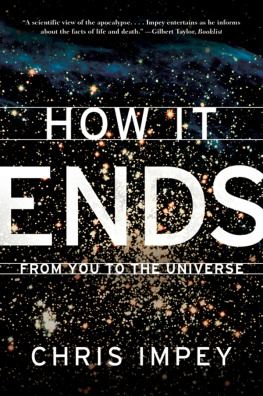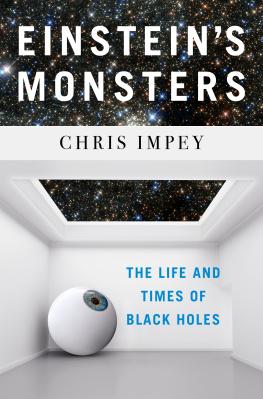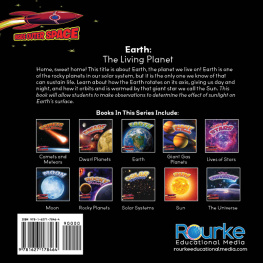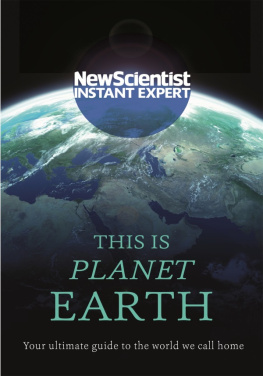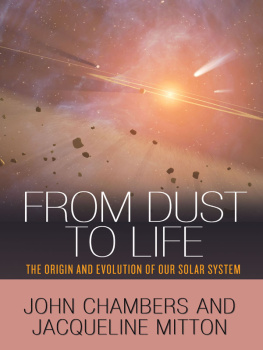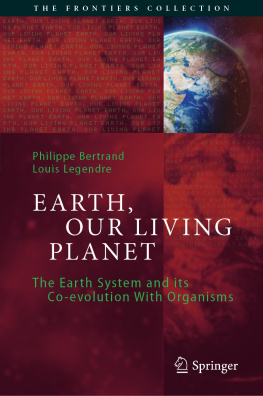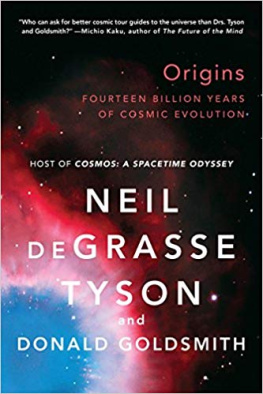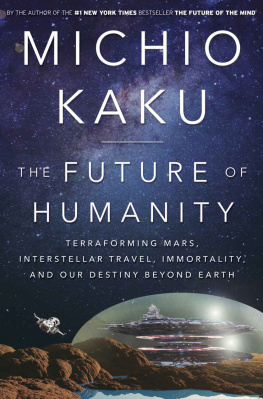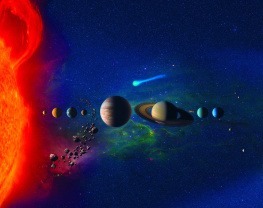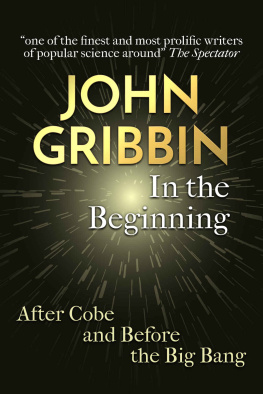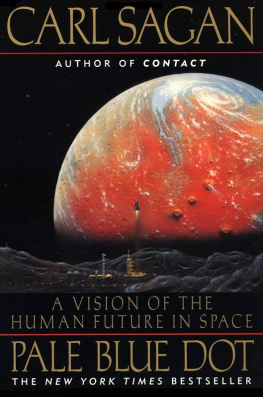W. W. NORTON & COMPANY
For information about permission to reproduce selections from this book, write to Permissions, W. W. Norton & Company, Inc., 500 Fifth Avenue, New York, NY 10110
Impey, Chris.
How it ends: from you to the universe / Chris Impey.1st ed.
p. cm.
Includes bibliographical references.
1. End of the universe. I. Title.
W. W. Norton & Company, Inc.
500 Fifth Avenue, New York, N.Y. 10110
www.wwnorton.com
W. W. Norton & Company Ltd.
Castle House, 75/76 Wells Street, London W1T 3QT
Preface
The universe is made of stories, not of atoms, said poet and political activist Muriel Rukeyser. I agree. One of the greatest myths of science is that is consists of nothing more than dull, obdurate facts. The myth dissolves in the face of the powerful narrative that science has created to help us organize and understand the world. We have a story of how the universe grew from a jot of space-time to the splendor of 50 billion galaxies. We have a story of how a broth of molecules on the primeval Earth turned into flesh and blood. And we have a story of how one of the millions of species evolved to hold those 50 billion galaxies inside its head.
This is a book about endings. Science mostly answers the question of how things got to be the way they are. Yet if we stop at the present day, the job is only half done, as every good story needs an ending. Explanation is comforting but as the Danish cartoonist Storm P once said, Prediction is very difficult, especially about the future. As a result, the material in this book is rooted in fact but it extends into conjecture. Scientists steer toward the boundary between what they know and what they dont know because thats where the excitement is. Despite the high proportion of speculation, I hope the reader finds the investment in fact more than trifling.
The material moves outward in scale from the human to the cosmic, and outward in time span from the familiar to the nearly eternal. In the first two chapters we confront our own deaths, and then consider the manner of our passing. The third chapter looks at threats to humanity and the fourth considers the likely fate of our species. As feisty apes with more piss and vinegar than wisdom we may not survive troubled adolescence, but visionaries are imagining ways we could transcend the limits of biology. The fifth chapter examines how we are webbed into the biosphere, and the next chapter looks at threats to the whole ecosystem. In all this, our atoms continue being part of the story.
In the second half of the narrative we move to the big picture of the future. Theres no place like home for us to hop to if we mess up the planet, but beyond the Solar System there are likely to be millions of Earth clones. Going off-Earth may be the only way to keep our story going for billions of years. After considering habitable planets and the fate of the Sun, the narrative turns to our citythe Milky Wayand looks at the exotic fate of its stellar denizens. Finally, we project the fate of the universe and consider the possibility that this 14-billion-year saga might not be real, or the likelihood that its just one of the stories that space and time have concocted.
Theyre esoteric, but the stories are about us. Even when considering our place among the galaxies, there are aspects of the universe that are conducive to our existence. The universe may not be mindful of us, but it turned the bed down and put a mint on the pillow like it knew we were coming. Time is the ruler for these stories. We follow it on scales from a heartbeat to the 1080 years it takes for the galaxy to dissipate. Physicist John Wheeler reminded us that we take it for granted when he said, Time is what keeps things from happening all at once.
The writing is aimed at the general reader. Ive tried to keep jargon to a minimum; essential terms are defined in a glossary. Technical details and asides are confined to the endnotes. The narrative is animated by vignettes at the beginning of each chapter, thumbnail sketches of top researchers, and even by some personal anecdotes, all of which serve as reminders that science is an essentially human activity, as complex and occasionally flawed as people themselves.
Everyone likes a good ending. But theyre easier to relish when theyre fictional, like the catharsis of a great movie or book, when the tension is resolved and all the loose ends are wrapped up neatly. This book is factual and it talks about the actual death of our planet, our star, our galaxy, us . Its not a cue to be glum, however, because the universe is filled with such magnificent possibility.
This project has taken me far beyond the bounds of my training and normal scholarship into chemistry, geology, biology, and sociology. Ive benefited from conversations with Fred Adams, Nick Bostrom, Carol Cleland, Frank Drake, Carlos Frenk, Andrea Ghez, Richard Gott, David Grinspoon, Phil Hopkins, Lisa Kaltenegger, Michael Kearl, Ray Kurzweil, Chris McKay, Katy Pilachowski, Martin Rees, and colleagues across the University of Arizona. Any errors due to insecure grounding or over-reaching into alien fields are entirely mine.
I made heavy use of the Internet, so I thank Sergey Brin and Larry Page for keeping a billion Web pages indexed at my fingertips. If they could manage the trick of returning a search in the form of the answer to a question I asked, theyd really be onto something. Im grateful to the Templeton Foundation for funding the project that brought many of the people in this book my way, and to NSF and NASA for funding my research on the science of endings large and small. I acknowledge the tranquil and reflective environment of the Aspen Center for Physics, where several of these chapters were written. Thanks to my agent Anna Ghosh for steering me through the shoals of the publishing world and finding good homes for my work. I acknowledge Angela von der Lippe at Norton for her expert guidance. Im grateful to my friends, near and far, for their support and for rescuing me into the real world when I venture too far into the rabbit hole of writing.
C HRIS I MPEY
Tucson, Arizona
July 2009

